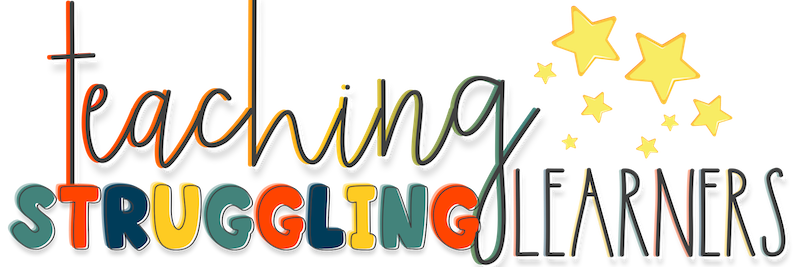Phonological Awareness versus Phonics

Before we get into the nitty gritty details about phonological awareness versus phonics, check out my phonemic and phonological awareness series I did a while ago. Check out podcast episodes #41 through 51 to get in depth information about the different sub-categories of both, as well as some tips and tricks about how to teach and progress monitor the individual skills. That series has been really helpful for a bunch of my teacher-friends to give them some ideas, as well as a fresh view-point for how to incorporate the skills into their classrooms or small group sessions. The episodes are short, but powerful!
So, no matter what grade level you teach, most teachers hear about how students are struggling with reading. Actually, most teachers are very aware that the reading struggle is real.
Unfortunately, it appears that most teachers who teach grades 2 and up aren’t as familiar with the process of teaching students to read as their younger grade coworkers.
I’ve spoken to many 2nd grade and up teachers who have said they expect the students who come to them to already be able to read. Their work is focused on increasing basic reading skills and comprehension.
Students who do not have basic phonological awareness and phonics skills won’t meet the reading expectations of their teachers.

Yes by 2nd grade, students SHOULD be able to read independently. By 2nd grade and up, students SHOULD be reading to learn, no learning to read.
Unfortunately, the standards which were set out years ago don’t accurately reflect the students entering our schools today.
The student clientele has changed drastically in the last several years, with huge skill gaps noticeable throughout the academic world. Students have been moved to higher grades several times, at this point, without mastering the prerequisite skills and the receiving teachers have not been provided with the training or resources to deal with this issue.
The problem is most noticeable with high school students who are unable to read textbooks on grade level. Teachers are having to change their plans and materials to such an extent that they are modifying the curriculum at this point.
Students are moving on to higher grades and falling further and further behind due to skill gaps which are not being addressed.

I am not a proponent for retention. All the data supports that retaining students is the wrong answer. But the fact remains that schools and districts MUST do something to deal with this issue. Students are being expected to work with material that is inaccessible to them, which causes teachers to have to make the decision between putting their head in the sand and just presenting the material as it is provided to them (which often results in poor teacher evaluations, loss of pay, and failing students) or changing the materials to the point of effectively modifying the curriculum (which causes inflated grading practices, as well as perpetuates the problem).
It‘s vital that teachers be provided with the training that they need to be able to identify the skill gaps that students have. With training, they can fill skill gaps while teaching the required curriculum on grade level.
Knowing the difference between phonological awareness and phonics is a key step for teachers to be able to identify the most basic skill deficit and address this need. Again, for specifics in how to teach or progress monitor these areas, check out podcast episodes 41 through 51.
the simplest way to describe the difference between phonological awareness and phonics is the presence or lack of letters. Yeah, it really is that simple at it’s most basic level.

Teaching phonological awareness or phonics is not simple. The skills are actually pretty complex. But the difference between the two categories is surprisingly simple. It’s a good thing….something in education should be simple.
At it’s most simplistic level, phonological awareness is how we recognize and manipulate sounds. These sounds could be differentiating between the words in a sentence, or the phonemes or individual sounds within a single word. Being able to identify the same or different sounds between two or more words. For example, identifying 2 rhyming words. The most complex skill, is manipulating the sounds in words to change the word.
That requires:
- Remembering the word
- Isolating a single sound in the word
- Changing that phoneme out for a different one
- Creating a new word.
When we start introducing the letters which are associated with the phonemes, we have crossed into phonics.
When we teach letters, letter sounds, blending letter sounds, segmenting letter sounds all of those skills are phonics skills….as long as the letters are present.
Now you can see how important those phonological awareness skills are! Without that solid foundation, phonics skills are harder to master.
For example, if blending and segmenting words is easy verbally, the student is set up for success.
You can see how important it is for students to have a strong foundation in phonological awareness and phonics skills. This way, more advanced skills can be developed more easily. Next time you’re working with a struggling reader, take time to investigate the most basic skill deficit. If you do, you are guaranteed to get a big bang for your buck!
